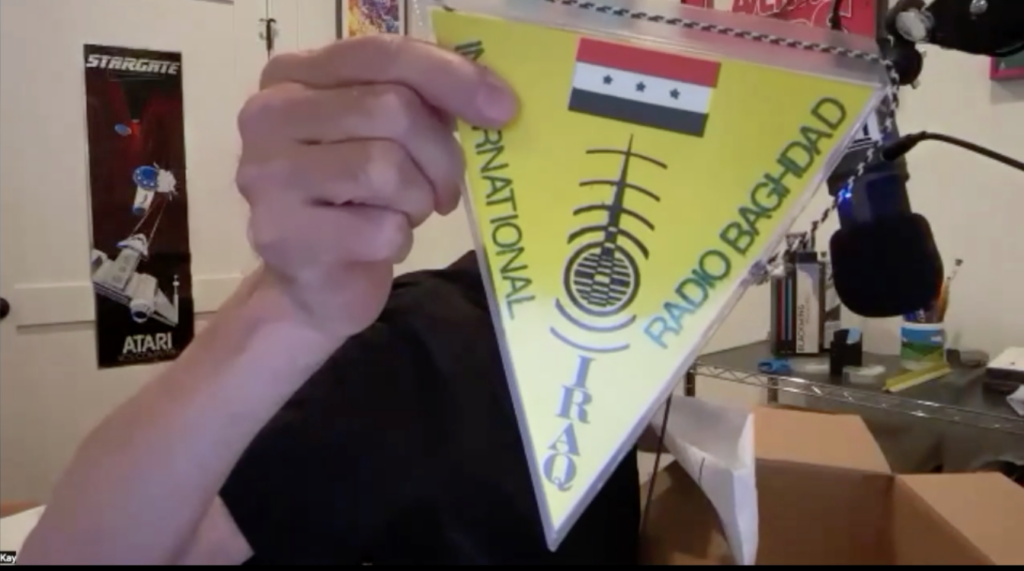
The video version of this episode is at: https://archive.org/details/store-and-forward-6
Kay discusses a subset of the ongoing DLARC project of Bob Cooper archive – https://archive.org/details/bob-cooper, discussing an obscure newsletter of Cooper’s called “Coops Technology Digest”. Despite the donation of a container full of Cooper’s personal archives to DLARC, there were missing issues of this interesting newsletter. Steve joked that the missing issues might be “forbidden knowledge”. Kay managed to track down some of those missing issues to two libraries in New Zealand (where this newsletter was published) in hopes that they’ll help DLARC and digitize the missing issues in their collections.
Kay discusses an obscure Amateur Radio publication called The Low Band Monitor that was donated by the California Historical Radio Society – https://californiahistoricalradio.com and the DX-Peditions Collection – http://archive.org/details/dx-peditions.
Kay discusses the issue of “The Problem Box”, where well-meaning folks “throw stuff into a box” for donation to DLARC. Unfortunately, random, uncategorized, unsorted material like this are problematic for the Internet Archive scanning folks who want to “just get the scanning done” as efficiently as possible. Thus Kay needs to step in to figure out what the material is, organize it, assign metadata, and assess its priority for scanning. All Amateur Radio material is welcome for DLARC, but sometimes the human touch of an archivist like Kay needs to get involved (and that’s one of Kay’s many roles in managing DLARC).
Finally Kay does another quick on-screen tour through the DLARC Wantlist of items that are known to exist, but have not yet been found or donated to DLARC such as missing issues of a magazine or newsletter.
Steve discusses his enthusiasm for the M17 Project, which he has been covering extensively in recent issues of Zero Retries. M17 began as a well-developed open source specification for Amateur Radio digital voice and data in VHF / UHF bands. M17 has now been developed into a number of different hardware and software projects. In the past few months, a new M17 radio was developed – the Connect Systems CS7000 M17 – the first radio that does M17 “out of the box”. M17 is now at the point where “all the pieces are available” for M17 to be used as a Digital Voice repeater system on VHF / UHF, equivalent to semi-proprietary digital voice systems such as DMR, D-Star, and System Fusion.
That M17 is an entirely open source system is causing a lot of excitement and interest in newer, younger, techie Amateur Radio Operators with a strong preference for using only open source systems in Amateur Radio. Amateur Radio “powers that be” don’t get why M17 being open source is different enough to justify changing their repeaters to allow M17, but some progressive Amateur Radio clubs do get it, such as Mount Diablo Amateur Radio Club sponsoring a dedicated digital voice repeater which includes M17 as “just another digital voice mode” – https://www.mdarc.org/repeater-systems/digital-voice.
As an example of why M17 being an open source project makes a difference, a recent project of M17 added public key / private key “signing” of M17 transmissions; if a public key signature is known (and trusted), a transmission that is “signed” with a person’s unique public key can be reasonably trusted to be from that person (who is the only person who can create a public key with the use of their unique private key).
Steve is also enthusiastic about M17 because it is unique among the digital voice systems that was developed from the beginning to accommodate data transfers on an equal priority basis with digital voice transfers. A recent development by M17’s primary developer created a prototype dedicated messaging app for M17.
M17 Project main website – https://m17project.org/
Connect Systems CS7000 M17 – https://www.connectsystems.com/products/top/radios/CS7000_M17.htm
Good overview article on M17 from Radio Society of Great Britain (RSGB) RadCom Magazine – The M17 Project by Ira Brodsky KC9TC https://archive.org/details/m17_project
Recent Zero Retries stories about M17:
Zero Retries 0163 – Why M17 Is Significant – Part 1 – https://www.zeroretries.org/i/147023976/why-m-is-significant-part
Zero Retries 0164 – Why M17 is Significant – Part 2 – https://www.zeroretries.org/i/147323902/why-m-is-significant-part
Zero Retries 0165 – Playing for “Those Five”, Microcomputers in 1976, Linux… and the M17 Project – https://www.zeroretries.org/i/147534885/playing-for-those-five-microcomputers-in-linux-and-the-m-project
Steve does yet another passionate plug for the entire run of 73 Magazine – https://archive.org/details/73-magazine being publicly available on DLARC with no restrictions, to anyone in the world… in marked contrast to other publications from the “Amateur Radio Publishing Industrial Complex” (Amateur Radio publications hidden behind a paywall). Kay put in a plug for another great magazine – Monitoring Times – https://archive.org/details/monitoringtimes that gave permission to be publicly available on DLARC.
Digital Library of Amateur Radio & Communications (a project of the Internet Archive) – https://archive.org/details/dlarc
Zero Retries Newsletter – https://www.zeroretries.org
Podcast: Play in new window | Download
Subscribe: Apple Podcasts | RSS